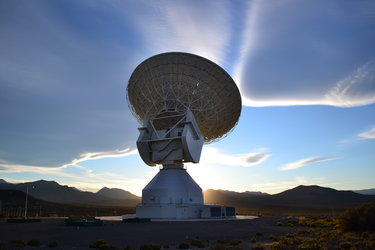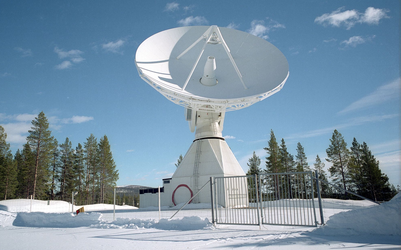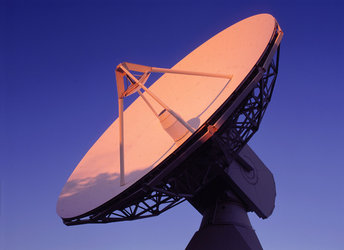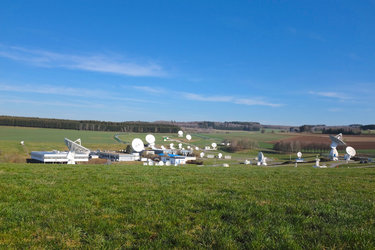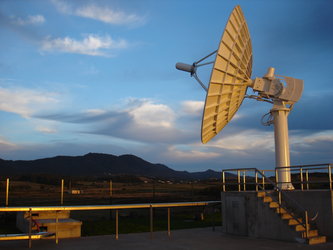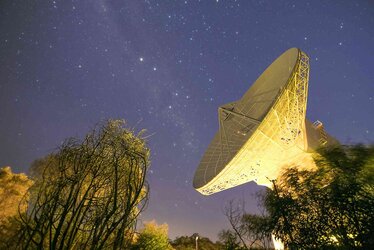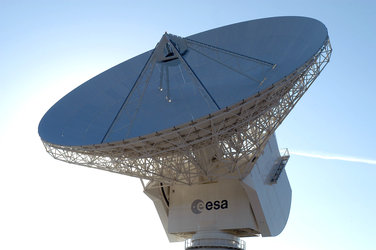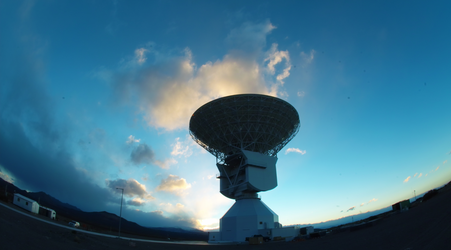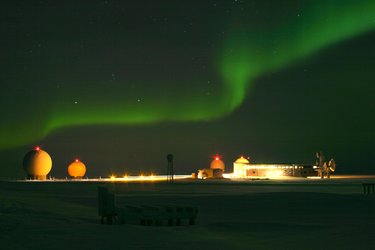Giant tracking station readies for operation
One of the world’s most sophisticated satellite tracking stations is nearing inauguration in Malargüe, Argentina, 1000 km west of Buenos Aires. The new station will ensure reliable communications with missions voyaging hundreds of millions of kilometres into our Solar System.
ESA’s new tracking station, near the town of Malargüe in Mendoza province, joins two existing stations in Spain and Australia to provide global coverage for the Agency’s deep-space missions.
Deep Space Antenna 3 – or DSA 3 – will send commands, receive data and perform radiometric measurements with missions such as Mars Express, Venus Express, Rosetta, Herschel, Planck, Gaia, BepiColombo, ExoMars, Solar Orbiter and Juice.
With major construction complete, teams are preparing DSA 3 for hand-over to operations, formal inauguration late this year and entry in routine service early in 2013.
First test signals received from Mars Express
The first test signals were received in June 2012 from Mars Express, over a distance of about 193 million km, proving that the station’s technology is ready for duty.
Initial in-service testing with the Malargüe station shows excellent results.
“Our initial in-service testing with the Malargüe station shows excellent results,” says Roberto Maddè, ESA’s project manager for DSA 3 construction.
“We have been able to quickly and accurately acquire signals from ESA and NASA spacecraft, and our station is performing better than specified.”
Maddè says part of the reason for the excellent performance is the improved ultra-low-temperature amplifiers installed at the station, and also the fact that it’s located at 1500m altitude in the clear Argentinian desert air.
Completing a trio of deep space stations
DSA 3 joins the Agency’s existing DSA 1 and DSA 2 stations in New Norcia, Western Australia, and Cebreros, Spain, respectively, to provide the third link in a global network that is controlled remotely by engineers at ESOC, ESA’s European Space Operations Centre, Germany.

Like the New Norcia and Cebreros stations, Malargüe is equipped with a giant 35 m-diameter dish antenna and super-sophisticated cryogenically cooled low-noise amplifiers to detect faint signals and operate at various power levels – up to 20 kW – to transmit commands.
The tracking capability of all three ESA deep space stations also provides support to partner agencies such as NASA and Japan’s JAXA, who likewise make their tracking networks available to ESA missions, helping to boost science data return for all.
The three are also equipped for radio science, which studies how matter, such as planetary atmospheres, affects the radio waves as they pass through. This can provide important information on the composition for the atmospheres around Mars, Venus or the Sun, for example.
Using galaxies to pin point satellite locations
The ESA stations can use the highly accurate ‘delta – Differential One-Way Ranging’ (delta-DOR) technique for very accurate locating and navigation of spacecraft in our Solar System.
This sophisticated method uses quasi-stellar radio sources – very energetic and distant active galaxy centres – as calibration points to fix the location of a spacecraft to within a few metres.
Boosting tracking capacity to support future missions
“The commissioning of this station into ESA´s deep-space network allows us to serve the most demanding scientific missions of ESA and provide the required communication capacity for transferring large volumes of scientific data from the sophisticated instruments onboard ESA spacecraft,” says Manfred Lugert, ESA’s Head of Ground Facilities Operations.
“The design, development and construction of this station marks a huge success for ESA and our industrial partners,” says Juan Miro, ESA’s Head of Ground Systems Engineering.
“It helps to confirm ESA as Europe’s top space research and development organisation.”















 Germany
Germany
 Austria
Austria
 Belgium
Belgium
 Denmark
Denmark
 Spain
Spain
 Estonia
Estonia
 Finland
Finland
 France
France
 Greece
Greece
 Hungary
Hungary
 Ireland
Ireland
 Italy
Italy
 Luxembourg
Luxembourg
 Norway
Norway
 The Netherlands
The Netherlands
 Poland
Poland
 Portugal
Portugal
 Czechia
Czechia
 Romania
Romania
 United Kingdom
United Kingdom
 Slovenia
Slovenia
 Sweden
Sweden
 Switzerland
Switzerland




























